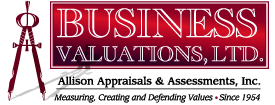After 25 years, I understand most see “what’s the [business] value?” as simple as determining the cash flow and the price multiple. Something that looks like $1,000,000 x 5 = $5,000,000 where the $1,000,000 is the economic benefit; 5x is the price multiple (risk/reward) and $5,000,000 is the value.
In the world of LegalZoom and TurboTax, it is easy to assume there is either a “Rule of Thumb” (“ROT”) or software that provides a value result. Sadly, there are such offerings in valuation, which is why some indicate that the result opined is “as much art, as it is science”. It also helps explain why both trusted advisors, clients and prospects ask “how much?” instead of “how good?”
I’m sure I would offend an attorney who drafts agreements and other legal documents if I distilled what s/he does as something that is commoditized. I would offend a CPA in the same manner. And I would offend the banker, wealth advisor or insurance professional if I commoditized their offerings as nothing more than rates and terms.
Why? Because there are so many individualized issues that a “cookie-cutter” approach would likely miss that the years of education and experience would be needed so the issues weren’t missed. I wrote Equity Value Enhancement (“EVE”) to dispel these service-is-a-commodity myths and over-simplifications.
Let’s deconstruct the valuation paradigm. I might agree before Daubert (court case requiring applying scientific method replaced knowledge had to exceed what was known by a layperson) replaced the Frye standard. Before increased access to technology, a great deal of assumptions were necessary to opine a privately held company value. Hence, the “art-science” claim had merit….. then.
However, with the availability of comparative and industry data, company performance metrics such as growth and profitability can more readily be obtained. This allows an analyst to stop comparing a company against itself (trend analysis) and offer good metrics of what “solid” company performance in a specific industry might look like. This is further assisted by increased industry transactional data to see what price multiples have been paid for same or similar profiles to the company being valued.
This research, analysis and synthesis makes determining the likely economic benefit ($1,000,000 in the example above) more supportable. Most experienced full-time valuators would agree. So, what about the price multiple (also known as the discount rate or capitalization rate shown as a percentage of risk/return expectation under the Income Approach)? This is the issue that separates the skilled analyst from those plugging in information into a software that spits out the result. Stated another way the price multiple or rate is about the past and future risk of achieving the same or higher economic benefit.
So, if 5x represents the risk, 4x would be more risky (value would be lower by 20%) and 6x would be less risky (value would be higher by 20%). So, how did the analyst derive the 5x versus the 4x or 6x? Given that 6x would result in a value that is 50% greater than a 4x ($6,000,000 versus $4,000,000), it stands to reason that a degree of due diligence and intellectual rigor is necessary to provide support for the level of risk. Software generated results and ROT simply cannot adequately capture these company specific risks.
And notice, thus far, all issues expressed above are financial and operational. EVE literally dedicates 100+ pages to these types of risks. Thus far we have addressed financial metrics, but businesses are a living organism comprised of people, ideas and actions that financial statements don’t adequately cover.
While we know that the top line (revenues) and bottom line (profits) are important, much of the factors that influence value are not recorded on financial statements. I have distilled these factors using the acronym “GRRK”, which I pronounce as “Greek”. These factors concern human capital.
The “G” stands for Governance which includes company culture, innovation, structure/policies and most importantly -strategy. So, a simple example would be to determine the level of management turnover and whether an articulated strategy exists and is being acted upon.
The first “R” stands for Relationships, which includes not only internal organizational relationships and those with clients, but those with a board, trusted advisors and vendors. How are these relationships being managed? Are they more transactional in nature or are they deeper creating synergies?
The second “R” stands for Risks. While this issue is very comprehensive, how a company goes about identifying, measuring, managing and mitigating risks and seizing opportunities will indicate whether it is reactive or proactive. It will show whether a company optimally leverages the relationships. Unless a valuator masters this, s/he is prone to follow a “check-the-box” recipe with nominal support identifying and quantifying this important factor of valuation.
The last letter “K” concerns Knowledge. This comprises both the ideas and innovation acted upon internally as well as those obtained through relationships and combinations. Uncommon knowledge when leveraged provides a significant competitive advantage which is difficult to replicate. This is what allows companies to differentiate and is why human capital is not simply “goodwill” as it also represented in the “GRR” of “GRRK” as well.
The purpose of this missive is to demonstrate, like other differentiated advisory services offerings, the determination of a business’ value is more than crunching numbers. It requires sufficient knowledge of operations and environment – a software generated result is inadequate. Commoditization reflects a lack of understanding of what a “good” work product looks like and its true worth.
This brings us to the bridge between valuation and value creation. There’s a significant increase in organizations and offerings for business enhancement services where data obtained from a client will generate an attractive looking software generated report that purports to flag company deficiencies and strengths. Once these elements are addressed, the provider claims s/he will be able to increase the value of the business. Quite a few of those who are attempting to apply these principles to generate more business revenues neither possess the industry knowledge nor the strategic and operational acumen to master much less effectuate the changes necessary.
As I have endeavored to compress 25 years into this missive, I liken the above to offering Fen-Phen (claimed weight loss pill that resulted in deaths and was unceremoniously pulled from stores’ shelves) versus the more practical and pragmatic diet and exercise. The latter may not be as appealing and takes more effort and resources, but the results are proven.
So, what do valuation and value creation have in common and where do they differ? Valuation is a performance benchmark as of a particularly point in time. A well written report will identify and measure the risks that led to the rates and multiples opined by the analyst. However, if the owner and advisors are interested in getting from “here to there” and wish to enhance the company or equity value, they must also manage and mitigate risk. This takes a holistic effort with an executed strategy involving skilled and invested stakeholders who must have the humility to align their own needs with that of the owner.
EVE provides the framework from elevating from management to mastery by leveraging human capital.
An interesting side-bar: When valuation analysts are asked to "discount" the value of owning a minority interest, what the client or prospect is actually asking is to reflect the asset, enterprise and equity level risks that support the impairments of ownership. In other words, the equity level is seldom the same value as the percentage interest of the whole, so some degree of concession is sought. The empirical support is how risk and volatility influence the liquidity (market demand and pool of buyers). It, too, is not simply an arbitrary figure.

